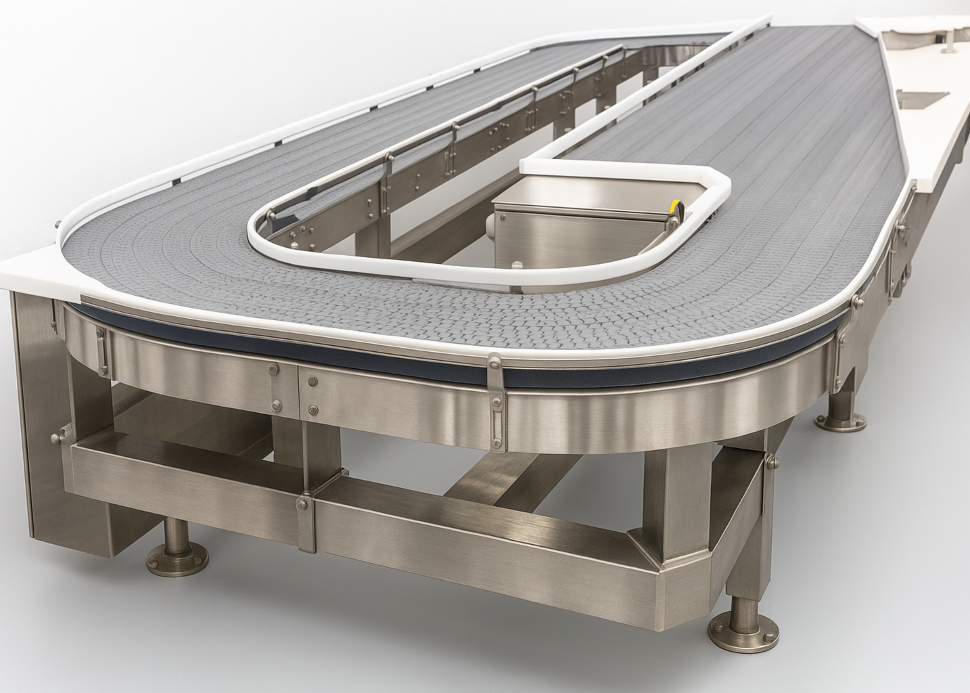What Cleaning Validation Protocols Exist For Pharmaceutical Accumulation Tables?

Anyone working in pharmaceutical manufacturing knows that maintaining strict cleanliness standards is crucial for product quality and regulatory compliance. When it comes to accumulation tables, which temporarily hold products during manufacturing, proper cleaning validation is especially critical. So, what cleaning validation protocols exist for pharmaceutical accumulation tables?
Standard cleaning validation protocols for pharmaceutical accumulation tables include visual inspection, swab testing for residue detection, and microbial testing, all of which must meet predetermined acceptance criteria according to FDA and GMP guidelines.
While this answer covers the basics, there's much more to consider when implementing these protocols effectively. Understanding the specific requirements for different types of products, the frequency of validation, and how to properly document results can make the difference between passing and failing regulatory inspections.
How Often Should Cleaning Validation Be Performed On Accumulation Tables?
The frequency of cleaning validation depends on several factors, including the types of products being manufactured, the risk level of cross-contamination, and regulatory requirements. Since facilities often use automated accumulation equipment to keep high-speed production lines running smoothly and minimize downtime, maintaining validated cleaning procedures becomes essential to prevent costly production interruptions.
For high-risk products or those with strict contamination controls, more frequent validation may be necessary, sometimes as often as monthly or even weekly. Additionally, any significant changes to the cleaning process, equipment modifications, or new product introductions should trigger a new validation cycle.
What Documentation Is Required For Cleaning Validation?
A comprehensive cleaning validation protocol must include detailed documentation of every step. This includes standard operating procedures (SOPs), cleaning methods, sampling locations, testing procedures, and acceptance criteria. The master validation plan should clearly outline these requirements and establish a system for maintaining records.
Each validation event must generate reports containing raw data, analytical results, and any deviations or corrective actions taken. These documents need to be readily available for regulatory inspections and should be retained according to regulatory requirements, typically for at least seven years.
How Do You Establish Acceptable Residue Limits For Accumulation Tables?
Setting appropriate residue limits involves calculating maximum allowable carryover (MACO) levels based on several factors. These include the toxicity of the previous product, batch sizes, equipment surface area, and the therapeutic daily dose of the next product to be manufactured.
The commonly accepted approach is to ensure that no more than 0.001 of the normal therapeutic daily dose of the previous product appears in the maximum daily dose of the next product. This calculation must be performed for each product combination that might share the accumulation table, with the most stringent limit typically being adopted as the standard.
Industry best practice also includes incorporating a safety factor into these calculations, usually 10-100 times more stringent than the calculated limit, to provide an additional margin of safety and account for potential sampling and analytical variability.
What Are The Most Effective Sampling Methods For Accumulation Table Validation?
Swab sampling remains the gold standard for cleaning validation on accumulation tables, as it provides direct measurement of residue levels on specific surfaces. The swabbing technique must be standardized and validated, with specific attention paid to recovery rates and consistent sampling pressure.
Rinse sampling can complement swab testing, especially for hard-to-reach areas, but shouldn't be used as the sole sampling method. For optimal results, a combination of both methods is often employed, with swab locations carefully mapped to include worst-case scenarios such as corners, joints, and areas with complex geometries, with particular attention to equipment positioned in manufacturing buffer zones where contamination risks are elevated.
What Should You Do If Cleaning Validation Results Fail?
When validation results exceed acceptance criteria, immediate investigation is necessary. The first step is to quarantine the equipment and assess the impact on any products that may have been manufactured since the last successful validation.
A thorough root cause analysis must be performed to determine whether the failure stems from inadequate cleaning procedures, operator error, or equipment issues. Based on these findings, corrective and preventive actions (CAPA) should be implemented, which may include revising cleaning procedures, retraining personnel, or modifying equipment design.
Following any corrective actions, the cleaning validation must be repeated with additional sampling points to ensure the issue has been fully resolved. Documentation of the investigation, corrective actions, and subsequent successful validation is crucial for maintaining regulatory compliance and product quality assurance.
Conclusion
Now that you understand the comprehensive requirements for cleaning validation of pharmaceutical accumulation tables, the most crucial action you can take is to review your current validation protocols against the standards discussed in this article. Schedule a meeting with your quality assurance team to assess whether your documentation system captures all the necessary elements, from sampling methods to acceptance criteria calculations, and create an action plan to address any gaps identified.

.jpeg)
.jpg)